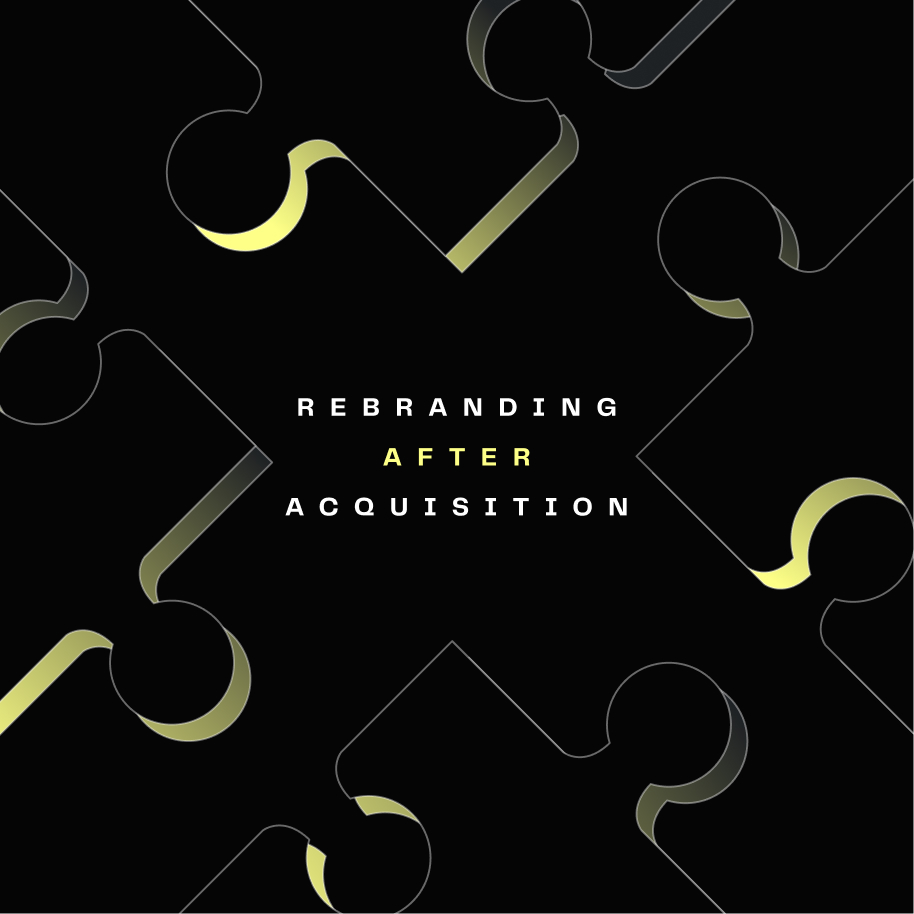With so many pressures put on your organization, it can be difficult to maintain a strong brand identity. But big-picture focus is the key to long-term success.
Consider this: Havas found that if 74% of brands disappeared overnight, no one would even care. The reason being: Most brands bite off more than they can chew and, as a result, fail to connect with anyone in a meaningful way. Truly, trying to be everything to everyone is an exercise in futility.
So how do you know if your brand is starting to lose focus? While there are many potential signs, here are the major ones to look out for.
01 Your target audience is too broad.
When asked to define their target audience, a surprising number of business leaders will respond, “Everyone!” While we appreciate their enthusiasm, as smart marketers, we also know that going too broad spells disaster.
Just think about the most successful politicians. Love ’em or hate ’em, they all seem to have a preternatural sense of how to dial into exactly the right audiences. The phrase “playing to your base” applies just as much to marketing as it does to running for office. Start by understanding who your most ardent supporters are; then, make sure their voices are not only heard but also amplified.
By honing in on the people most likely to buy your product or services, you’ll establish a stronger footing in the market faster. You’ll also signify to buyers who you are, what you stand for and what makes your brand unique.
But where exactly should you start? Our advice is talk with your teams. From marketing and sales to customer success and support, internal stakeholders hear directly from prospects and customers every day. They also have access to data that can quantify who’s most valuable from a conversion and retention perspective.
Armed with these insights, you can then develop ideal customer profiles or, better yet, full buyer personas. However you define them, effective audience profiles should capture important attributes like demographics, firmographics and psychographics, along with buying behaviors.
For B2B companies, in particular, we recommend following the Buyer Persona Institute’s methodology for persona development, framed around “the five rings of buying insights,” as outlined below.
The 5 rings of buying insights for audience personas.
- Priority initiatives: urgent pain points that lead buyers to look for a solution ASAP
- Success factors: the results buyers are looking to achieve by purchasing a solution like yours
- Perceived barriers: the fears or preoccupations that keep buyers from choosing your solution
- Decision criteria: the particular capabilities buyers are looking for as they evaluate your solution
- The buyer’s journey: the process and resources buyers use as they reach a final purchasing decision
Still, you might be asking, “But how granular should I get with my segmentation?” Our advice is don’t be overly exhaustive. In fact, most B2B brands need just two personas: the lead evaluator and the economic buyer.
At the same time, you should consider who your brand is not for. Then, you need to get everyone at your organization comfortable with the notion that you can’t be all things to all people.
The Economist illustrates this point well. When faced with an image problem several years ago — the fact that many people thought it was a fuddy-duddy industry pub — the magazine’s marketing team got to work. They dug deep into the mindset of their audience and determined the commonality was people who are “globally curious.”
“Our internal research showed that the kind of person who is attracted to The Economist has an open mind and is not afraid to be challenged. We call these people the ‘globally curious.’” — Marina Haydn, SVP, Circulation and Retail Marketing
From there, The Economist crafted a campaign that invited people to “taste the future,” showcasing food production innovations that would help feed a growing global population. Translating these innovations into marketing activations, The Economist set up shop in several global markets, handing out everything from ice cream treats made with insect protein to cups of coffee made with filtered water from a nearby porta-potty.
Pretty gross, right? Well, that depends on who you are. For the Economist’s typical reader, this type of content is actually rather fascinating; for many others, it isn’t. And for The Economist, that’s just fine. Having insights into different people’s mindsets helped the magazine screen out the squeamish and speak directly to its base.
The decisive move paid off. Following The Economist’s “Discomfort Future” campaign, 24% more people found the brand interesting, while one-third found it less boring. Meanwhile, subscriptions increased 28% year over year, translating into a 171% return on investment.
The takeaway: When brands fail to identify their niche, their messages won’t resonate with their most valuable audiences. And in the end, everyone is left with blasé branding that might as well be forgotten.
02 Your brand lacks clear differentiation.
With so many brands at risk of falling into obscurity, you should take serious stock of yours to make sure it stands out and sticks with people. Especially if your organization is scaling fast and adding offerings, your brand might be coming across as a mishmash to the market.
A sound strategy should emphasize what sets your brand apart and why customers should choose you over any alternatives. Start by analyzing your top competitors; then, determine what white space you should occupy.
With a clear brand direction in place, you can then get into building out your full brand strategy — inclusive of positioning, value props, messaging and more.
03 Your brand messaging is inconsistent.
Clarity, consistency and cohesion are the three Cs that define effective brand communications. If you lack any one of these, you’re probably putting out mixed messages.
Typically, in the brand development process, messaging frameworks follow audience identification. For the most optimal approach, messaging frameworks should include a positioning statement, a brand promise and unique value propositions for each of your main audiences.
While the particulars of the positioning statement might vary, what matters is getting the core elements right. Below is an example of a formula that works well in covering the basics.
Brand positioning statement formula.
“For [audience target], [brand] is the [category definition] that [brand promise] by [reasons to believe].”
With a brand positioning statement in place, you can then document how to modulate the message to resonate with each audience. As part of that, your messaging frameworks should include your core differentiators, key messages and factual proof points.
The ultimate goal of a messaging document is to establish uniform language around your brand’s offerings so that your entire organization reads from the same page. Otherwise, you’ll struggle to stand out with a voice that’s clear — and clearly yours.
04 You keep changing your brand identity.
As marketing creatives, we love a branding project as much as the next person. But knee-jerk moves to upend all aspects of your brand just for the sake of having something fresh in the market — or, worse, just to put your stamp on something — can be fatal.
Brands that alter their identity — including logos, color palettes, taglines and more — without a solid rationale only confuse the market. So if you’re weighing whether you need to revamp or refresh your brand, consider enlisting the help of an outside expert who can objectively assess your brand’s strengths and weaknesses relative to your competitors’.
Of course, some branding initiatives are necessary at times. Perhaps you’re in acquisition mode, and you need to fold in the companies you’ve acquired. Maybe you’re expanding into new markets, and your brand doesn’t translate well internationally. Or you might have experienced some sort of crisis in the past, and now you need to hit reset. The list goes on.
These are all smart reasons to pursue a change in your brand direction. But excessive updates will just dilute your market presence and could even cause some people to suspect you’re running from something.
A well-focused brand should evolve gradually and purposefully, aligning with your brand’s core values and long-term vision, while preserving any valuable equity.
05 Your products and/or services don’t feel connected.
Organizations that offer a wide range of unrelated products or services can water down their brand’s identity. Unless you’re clear on your strategy, this will make your marketing messy and cause further consumer confusion.
With that in mind, consider how you’re organizing your product and/or service portfolio, both in strategy and in nomenclature. From a brand architecture perspective, are you a house of brands or a branded house? Or perhaps you are applying an endorsed brand strategy. Below is an example of each, all from successful global brands.
Brand architecture examples.
- House of brands: PepsiCo, which includes 7 Up, Aquafina, Doritos, Sabra, Quaker, Lipton and more
- Branded house: Apple, which includes iPhone, iPad, MacBook, Apple TV and more
- Endorsed brand strategy: Kellogg’s, which includes: Kellogg’s Frosted Flakes, Kellogg’s Corn Flakes, Kellogg’s Rice Krispies, Kellogg’s Special K and more
Once you’ve decided which approach makes the most sense for your brand, either connect the dots or maintain the necessary separation when communicating to the market.
06 Your customer experience is disjointed.
Along with considering how your offerings are organized, you need to think through the experience you provide your customers.
In today’s multichannel world, people interact with brands across several touch points, including websites, social media, brick-and-mortar stores, events and customer support lines. If your brand fails to deliver a consistent and seamless experience across each of these touch points, your customers will feel frustrated and might switch to a competitor.
To ensure a seamless experience, make sure you’ve shared your brand guidelines with all of your internal team members, especially those on the frontlines of customer communications. Effective brand guidelines should provide examples of your brand in action, showcasing, for example, how to talk on Twitter compared to how to communicate through email.
Still, simply directing people to these guidelines isn’t enough. You also need to make sure every new employee is familiarized with your brand during the onboarding process. This can be a 30-minute training session hosted by a representative from your marketing team. Be sure to go over dos and don’ts to make the guidelines as practical as possible while answering any audience questions.
Similarly, if you make any major updates to your brand guidelines, communicate what’s changed to your entire organization so that everyone remains informed and aligned.
07 You haven’t established a long-term vision.
Perhaps the most important thing of all is having an inspiring vision for where you want your brand to go — and how everyone plays an important role in getting there.
To help, consider creating a vision/traction organizer (also known as a VTO). This one- to two-page document should include your brand’s core values, focus areas, go-to-market strategy, unique qualifiers and measurable goals for the next three to five years. Succinct as it might be, a VTO will serve as a compass to guide everyone at every level of your organization.
To stick the landing — focus, focus, focus.
When it comes down to it, focus is the core component of your brand’s long-term success. Take an honest look at your organization as it stands today, and ask your prospects and customers how they perceive your brand relative to your competitors. You might be surprised when some red flags start popping up.
If they do, fear not. The corrective measures above should help realign your organization’s strategies while strengthening your brand’s overall identity. And if you ever need a partner to tackle this challenge, know that Sunup is here to help.



